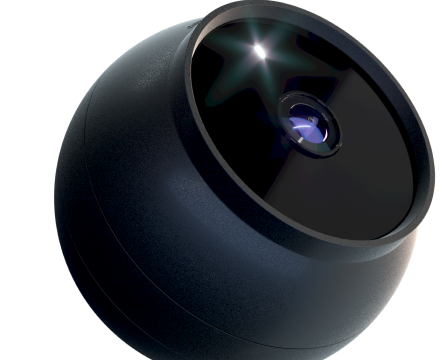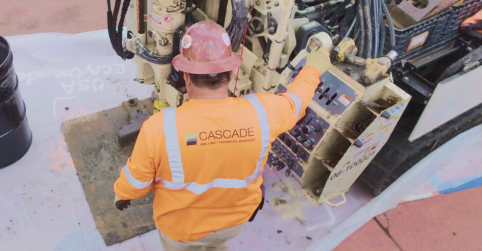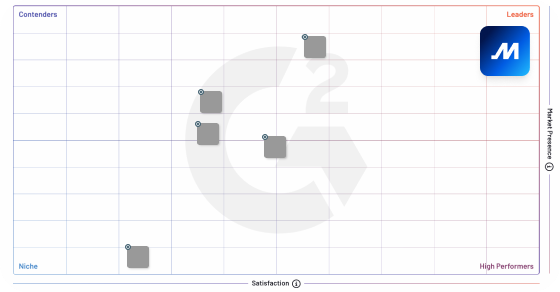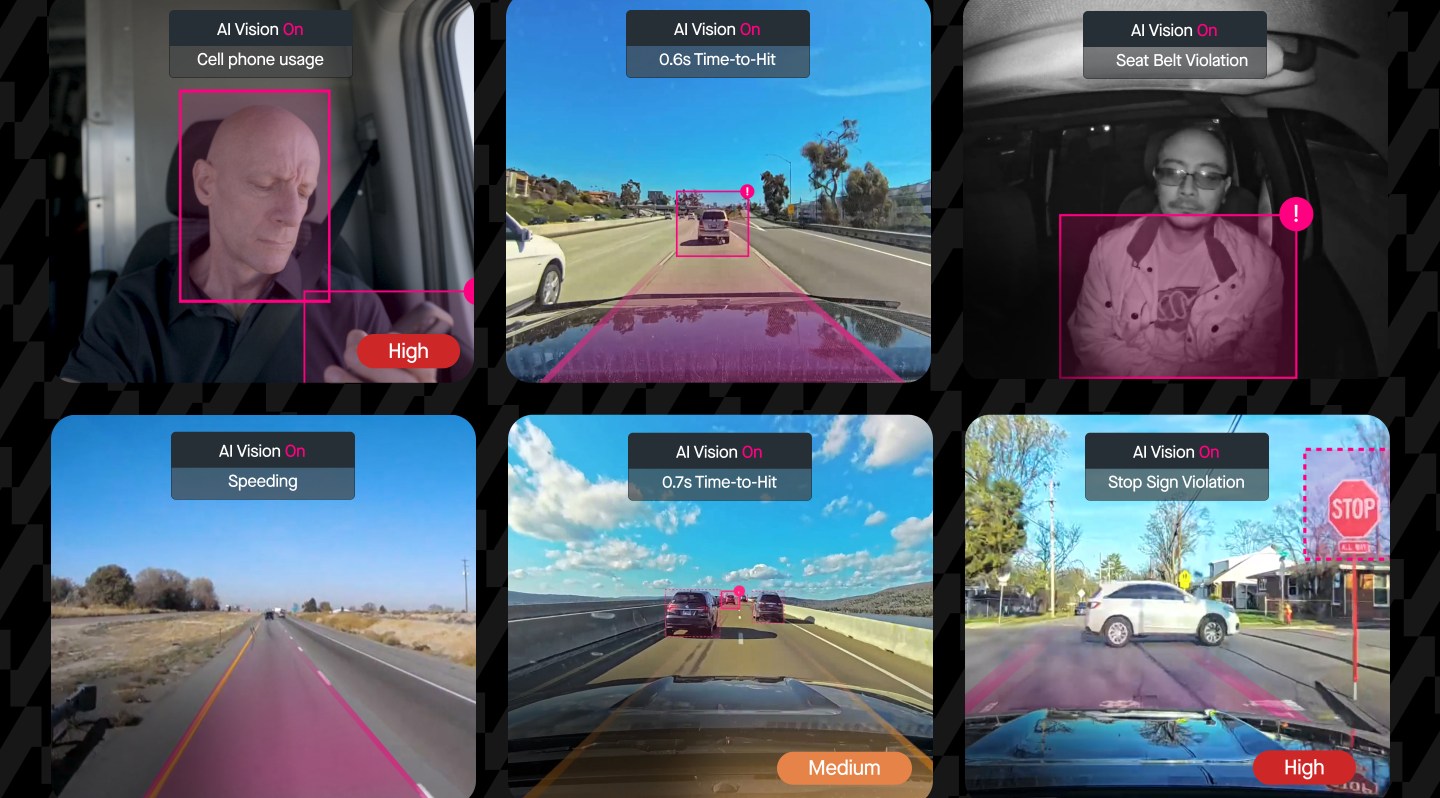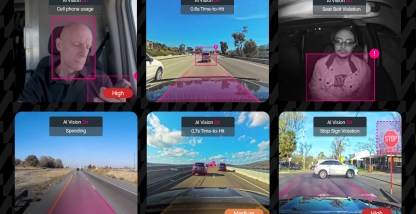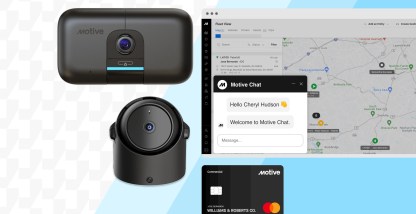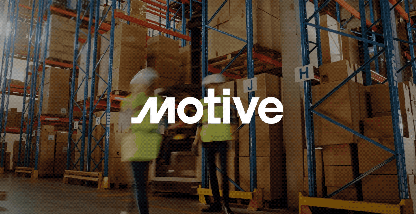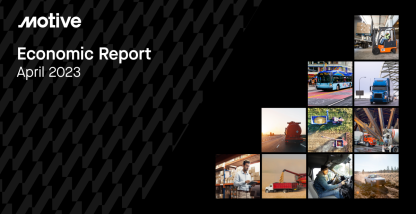The Motive AI Dashcam has earned recognition for its exceptional accuracy in detecting unsafe driving behaviors. Studies by the Virginia Tech Transportation Institute and Strategy Analytics show that the Motive AI Dashcam significantly outperforms competitors, detecting unsafe driving behavior 3x to 4x more accurately. For organizations, that leads to reduced risk and fewer accidents.
Motive’s industry-leading AI is the result of an exceptional machine learning engineering team and superior AI Dashcam hardware. But equally important is the Motive Safety Team, made up of 400+ safety experts who watch every safety event video generated by the AI Dashcam to remove false positives and improve the performance of our AI models. This unique combination of cutting-edge technology and human insights from our Safety Team is why Motive leads the industry in unsafe behavior detection and accident prevention.
1. Eliminating false positives
No AI model is perfect, of course. Sometimes, AI may inaccurately flag safe situations as risks, resulting in false positives. Unfortunately, false positives have real consequences, causing drivers to be punished for mistakes they didn’t make. For a deeper understanding of the impact false positives have in the industry and why rooting them out is so critical, consider this Vice article that shows what happens when technology falls short.
The Motive Safety Team ensures that safety managers are able to focus exclusively on what matters — genuine safety concerns, not false positives. In only notifying managers of the most consequential safety events, the Motive Safety Team helps to safeguard the integrity of fleet operations and drivers themselves.
And that’s not the only benefit. Safety managers using other dash cam providers may spend nearly 10 hours a week reviewing false positives or watching videos with no coachable events. It’s a significant waste of valuable time.
Thanks to the dedicated work of the Motive Safety Team, Motive customers spend zero time watching false safety event videos. The team reviews every single safety video, removing any false positives. This ensures that only true safety events make it to the safety manager’s dashboard, allowing managers to focus solely on the most pressing issues that deserve their attention.
Let’s take a look at some false positives removed by the Motive Safety Team.
2. Improving the accuracy of our AI models
The accuracy of our AI models owes much to the Motive Safety Team’s meticulous work in eliminating false positives and classifying videos. Our experts label every video, capturing as many uncommon, real-world scenarios as possible to continuously train and improve our models. By noting details like time of day, road type, and weather conditions, the team provides valuable insight into how well our models perform in different situations.
It’s important to note that increasing AI accuracy from 92% to 93% is much harder than moving from 80% to 90%, as it involves training the model on less frequent, more unique, real-world scenarios. The Motive Safety Team plays a pivotal role in our validation process, curating thousands of uncommon scenarios to refine each model.
The Safety Team’s insight into behavior frequency and model precision help the R&D team prioritize the most critical scenarios. For example, through this process, we’ve improved the performance of our close following model in low light and curved road scenarios. This continuous feedback loop not only improves our ability to predict risk, but also ensures that regular AI enhancements are deployed every few weeks, maintaining our leadership position in the industry.
3. Best-in-class collision detection
Motive can proactively identify 99% of high-severity collisions and get video footage to safety managers in seconds, thanks to the Motive Safety Team. No other vendor can claim this.
We’re able to accurately capture such a high number of accidents because, for every real accident, we consider over 100 potential crashes. To ensure that we don’t miss anything critical, we cast a broad net. The Motive Safety Team watches every video and filters out false positives. Managers only see the real accidents — just 1% of what the team evaluates. Our AI model, trained on 10,000+ collisions, is regularly updated for better accuracy.
Importantly, you almost never have to go and manually pull accident footage through our Video Recall feature. We bring it to you. Safety managers are alerted immediately with video and automatic collision reports, while drivers can quickly access collision video in the Driver App for roadside exoneration.
Let’s take a look at some possible collisions identified by the Motive Safety Team.
Full-stack driver safety solution
Motive has taken a full-stack approach to AI-powered driver safety. Our foundation lies in exceptional engineering across hardware, software, and machine learning. But without expert human training, AI isn’t accurate and can’t deliver real value. By meticulously removing false positives, the Motive Safety Team protects drivers from false positives, and improves the accuracy of our AI models and collision detection, making Motive the leader in AI-powered driver safety.
Take a tour to learn more about the Motive Driver Safety platform today.
